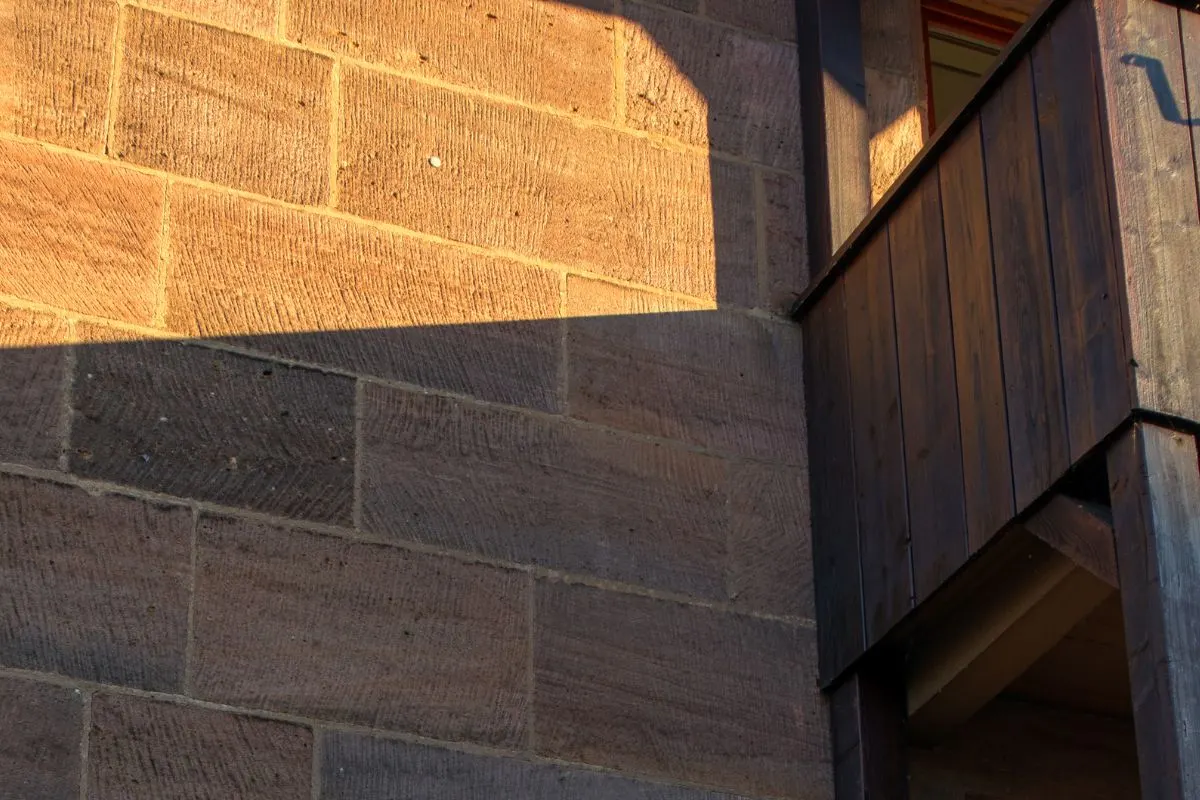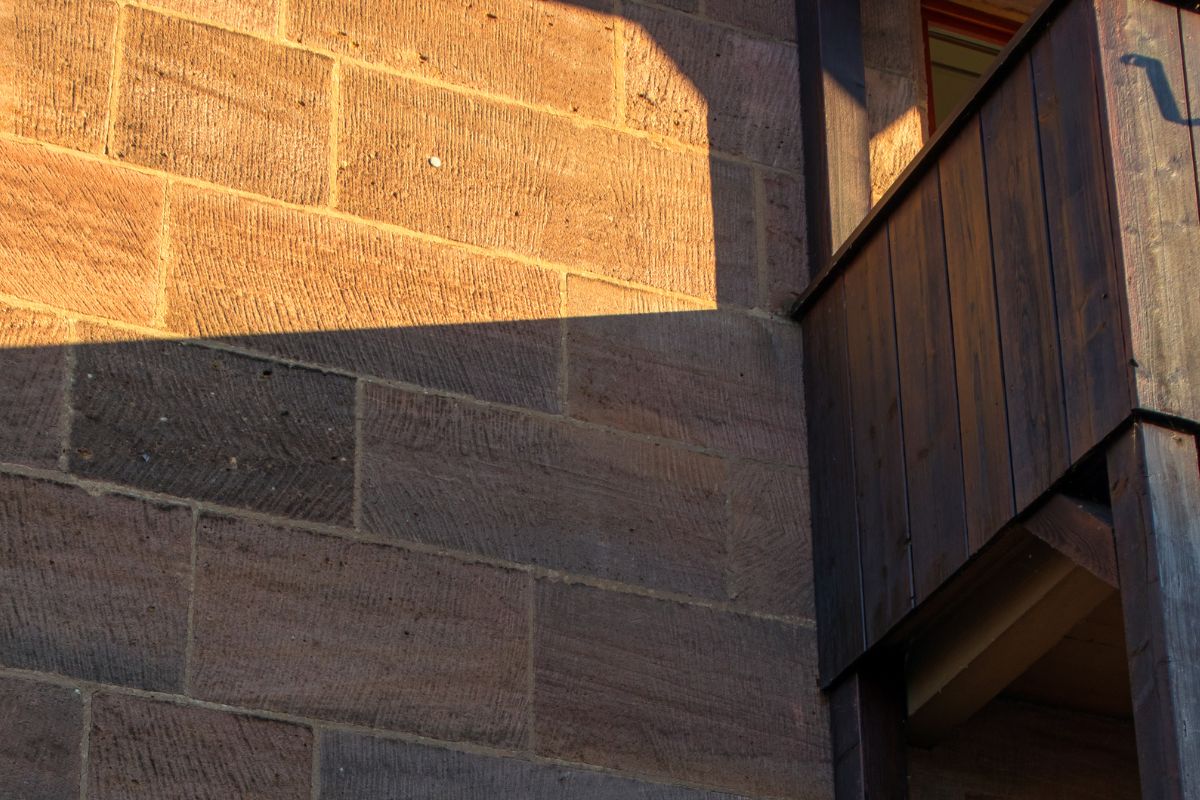Do you have a gap between brick and wood and don’t know how to seal it? Are you worried about the gap causing damage? Well, no fear, we are here to help!
Gaps between brick and wood are common. They are often put in place by brick layers to provide space for air to circulate.

These weep holes are usually included in brick walls to allow excess water to drain out of the walls. But what happens when the holes are too big? Or when you have a gap that needs sealing?
We have you covered! Keep reading to find out how you can seal the gap between brick and wood.
We are here with a step-by-step guide and some tips and tricks we have used when sealing out brick and wood gaps!
So how do you seal a gap between brick and wood? Well, a caulk made with latex and silicone is your best option!
Why? It adheres best to wood and brick and is water resistant. Plus, it is the most flexible and durable caulk!
It is used as you use other caulks, providing a permanent seal between your brick and wood!
What Should I Use To Seal The Gap Between Brick And Wood?
The best material to use to seal your gaps between bricks and wood is caulk. Caulk, for those that don’t know, is a flexible material that is used to seal any air leaks or gaps.
Caulk is typically used when there are gaps less than ¼ inch wide.
You will often find caulk used to seal gaps around door frames, windows, gaps between cupboards and walls, and any other gap you might find in your home!
There are several types of caulk on the market, made with different materials.
Each of these caulk types has different uses and benefits, giving you plenty of options to choose from! But which is best for sealing gaps between brick and wood?
Latex with silicone caulk! This caulk comes with extra durability, flexibility, and water resistance, making it perfect for use indoors and outdoors.
No matter where the gaps between your brick and wood are in your home, this caulk can do the job!
What we love about it is that it is paintable. You don’t need to worry too much about the color of the caulk standing out against your brick or wood, you can simply paint over it!
This caulk also comes in a range of colors or is clear too. We prefer the clear caulk, as we found it sealed the gap without attracting much attention to it.
Can I Use Other Caulks?
Yes! If you don’t want to use latex with silicone caulk, you can use acrylic latex to seal the gap between wood and brick.
Acrylic latex caulk is best used indoors on any cracks, joints, and small holes. It has good UV resistance, but not as good as latex with silicone.
Acrylic latex caulk does shrink more than latex with silicone too, we found that we needed to use more to cover the same gap, making it a more expensive option for us.
It also isn’t as flexible as latex with silicone, making it trickier to handle, especially in tight spaces.
If acrylic latex caulk is all you have to hand, it will do the job, however, where possible, we recommend opting for latex with silicone caulk.
How To Seal Gap Between Brick And Wood
Now that you have your caulk, it’s time to seal the gap between brick and wood! You can follow our step-by-step guide below to see how to use caulk to seal the gap.

Step 1 – Prepare The Area
Before you apply your caulk, you need to prepare the area. For outdoor use, pick a dry day with a suitable temperature.
Different types of caulk are applied at different times, so be sure to select the day correctly!
Take a knife or sharp scissors and cut ¼ inch from the end of a caulk tube. Do this at a 45-degree angle.
You can then place the caulk tube into a gun, twisting the top of the gun clockwise until it’s snug against the bottom of the tube.
Some caulk tubes work with a spring instead of twisting. With these, simply pull the rear portion back to insert the tube into the gun.
Step 2 – Patch Test
Before you get to work, take a small spot to use as a patch test. Take the caulk gun at a 45-degree angle with the surface of the brick. Put a small amount of caulk into the patch and rub it into place.
If you are happy with how it looks, this is your starting piece!
Step 3 – Apply Your Caulk
Now it’s time to apply your caulk! Press the trigger on the caulk gun and spread a layer of caulk along the brick.
It is best to do this in a singular motion for an even application. Once you have reached the end of the surface, you can release the trigger on the gun to stop the caulk from flowing.
Take a finger and place it on one end of the caulk, pressing down slightly.
Run your finger along the length of the caulk line, smoothing it into place. We found that doing this helps to create a professional finish on the caulk.
It also helps to push the caulk into any small cracks that you might have missed.
Step 4 – Paint (Optional)
To finish, you can paint over the caulk. This is an optional step and will depend on the finish that you want and the color of the caulk you have purchased.
Once the caulk has dried, you can take a small craft brush to apply paint to the caulk. Allow the paint to completely dry before you do a second coat.
Final Thoughts
And there you have it, how to seal a gap between brick and wood! Latex with silicone caulk is your best option to fill the gap and requires little effort from yourself.
Be sure to follow along with our step-by-step guide to permanently seal the gap between your brick and wood.
